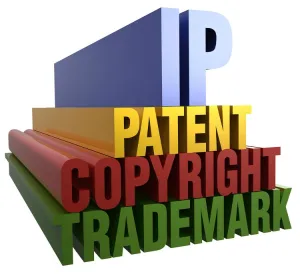In its Final Written Decision, the Board determined that the remaining challenged claims (4, 6-8, and 10) of the ’387 Patent are unpatentable, and denied Patent Owner’s Motion to Exclude. The ’387 Patent relates to the conditional trading of securities, such as convertible bond “swaps,” risk arbitrage, and combinations thereof in both listed and over-the-counter markets, via one or more electronic networks.
The Board first discussed whether the ’387 Patent is eligible for covered business method patent review. In its Decision on Institution, the Board determined that the patent is eligible for review. In its Patent Owner Response, Patent Owner contended that the claims of the ’387 Patent are technological inventions. However, the Board found that Patent Owner did not adequately explain how the claims encompass novel software tools and graphical user interfaces. Therefore, the Board found again that the ’387 Patent is eligible for covered business method review.
The Board then turned to claim construction, stating that terms are given their broadest reasonable interpretation in light of the specification. The Board adopted its constructions from the Decision to Institute, which were not opposed by either party. The Board then noted that Patent Owner proposed constructions for five additional claim terms. The Board rejected these constructions, stating that the constructions were not consistent with general claim construction principles, and determined that these phrases could be given their plain and ordinary meaning. The Board then reviewed the term “simultaneously executing a trade.” Neither party provided a construction of this term, but the Board found it necessary to construe in light of the arguments regarding prior art. Reviewing the specification, the Board found that the term did not apply to executing just one leg of a spread order simultaneously, but multiple legs simultaneously.
Next, the Board reviewed whether CFTC is prior art. Petitioner asserted that it was published December 7, 1992 based upon the date being on the face of the art along with the marking “PUBLIC COPY,” and a stamp from the agency indicating it was received for public record on December 18, 1992. Patent Owner stated that Petitioner failed to meet its burden to establish that CFTC qualifies as a prior art printed publication because Petitioner did not show that it was disseminated to the public before the filing date of the ’387 Patent. The Board was not persuaded by Patent Owner’s arguments, and determined that there is sufficient evidence to demonstrate that CFTC is a printed publication and qualifies as prior art. The Board stated that CFTC was applied as a prior art reference in three proceedings before the PTO, and that Patent Owner did not dispute its status as prior art during those proceedings. The Board also noted that Patent Owner attempted to undermine the testimony of Petitioner’s declarant, a paralegal specialist at the agency, with attorney argument, which is not evidence.
The Board then reviewed whether the challenged claims are obvious over the combination of CFTC and Lupien. The Board began with independent claim 7. Petitioner relied upon CFTC to teach all of the limitations recited in claim 7, except “an external price feed depicting prices of various items and contracts from external multiple data sources,” which Petitioner states is taught in Lupien. The Board noted that it was not persuaded by Patent Owner’s individual attacks on Lupien because they do not address the combined teachings of CFTC and Lupien. The Board was also not persuaded by Patent Owner’s argument that Petitioner did not provide sufficient rationale to combine CFTC and Lupien. The Board cited the Supreme Court’s reasoning in KSR as support for combination of CFTC and Lupien.
The Board then turned to dependent claims 4, 8, and 10. The Board found that Patent Owner had mischaracterized Petitioner’s arguments regarding which features are disclosed by CFTC and Lupien. The Board also credited Petitioner’s expert’s testimony regarding disclosure of the features. Further, the Board did not credit Patent Owner’s use of Petitioner’s expert’s cross-examination testimony to support its position, finding that the expert was merely responding to Patent Owner’s counsel’s questions.
Next, the Board reviewed claim 6. For similar reasons to those above, the Board was not persuaded by Patent Owner’s arguments.
Finally, the Board reviewed Patent Owner’s Motion to Exclude the CFTC reference itself, the stamps or markings on the title page of CFTC, portions of Petitioner’s expert’s declaration, and portions of Petitioner’s expert’s rebuttal declaration. The Board found that the CFTC reference is self-authenticating under at least FRE 902(5) as an official publication of the U.S. government and 901(b)(8) as a document that is at least 20 years old. The Board found that the stamps or markings on the title page of CFTC fall under the exceptions to hearsay under FRE 803(6) and 803(16). The Board then found that the expert declarations do not lack foundation under FRE 702 and that the reply declaration does not exceed the permissible scope of testimony.
Chicago Mercantile Exchange, Inc. v. 5th Market, Inc.,CBM2014-00114
Paper 35: Final Written Decision
Dated: August 18, 2015
Patent 7,024,387 B1
Before: Kalyan K. Desphande, Michael R. Zecher, and Georgianna W. Braden
Written by: Zecher
Related Proceedings: Reexamination Control No. 95/002,032; CBM2015-00061; CBM2013-00027



 />i
/>i

